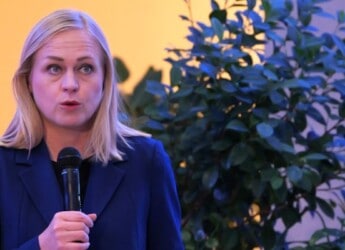Editor’s Note: Originally published in June 2019 and updated annually, this report on eDiscovery processing task, spending, and cost information contains new data points based on recent refreshes of industry research from ComplexDiscovery OÜ. This update includes information from the 2023-2028 eDiscovery Market Size Mashup for Worldwide Software and Services and the most recent eDiscovery pricing survey conducted in November 2023. This update may be beneficial for legal, business, and IT professionals considering the business of eDiscovery and, specifically, the economics of eDiscovery processing.
Content Assessment: A Recent Look at eDiscovery Processing: Task, Spend, and Cost Data Points
Information - 95%
Insight - 94%
Relevance - 95%
Objectivity - 96%
Authority - 97%
95%
Excellent
A short percentage-based assessment of the qualitative benefit of the post highlighting ComplexDiscovery OÜ research on the eDiscovery task of processing electronically stored information.
Industry Research – Markets
A Recent Look at eDiscovery Processing: Task, Spend, and Cost Data Points
ComplexDiscovery Staff
Within the context of data discovery and legal discovery, the task of processing consists of reducing the volume of collected electronically stored information (ESI) primarily through automated processing techniques and modifying it, if necessary, to forms more suitable for other eDiscovery tasks including review and analysis. It is one of three tasks that, along with collection and review, make up the core tasks typically associated with the process of eDiscovery.
In considering the relative costs of the three core eDiscovery tasks of collection, processing, and review, in 2012, processing represented approximately 19% of the total expenditure for eDiscovery tasks, with collection representing 8% of expenditures and review representing 73% of expenditures. (1) Based on market modeling since 2012, the relative costs of these core eDiscovery tasks in 2023 are estimated to be 20% of expenditures for processing, with collection representing 15% of expenditures and review representing 65% of expenditures. (2)
Evolution of Processing Costs
The marginal increase in eDiscovery processing costs from 19% to 20% of total expenditures between 2012 and 2023 reflects a complex interplay of technological, legal, and market factors. This slight increase can be attributed to several factors, including advancements in technology, increased data volumes, and the evolving complexity of data types. Over time, processing has become both more sophisticated and more essential to the eDiscovery process due to the diversification of data sources and formats.
Technological Advancements
The advent of more powerful and efficient processing tools has played a pivotal role in managing the burgeoning volume and variety of data. Innovations in artificial intelligence (AI) and machine learning (ML) have enhanced the capabilities of processing software, enabling more nuanced and precise data culling, deduplication, and conversion. These advancements have improved processing outcomes but have also required additional investments in technology, which may contribute to the relative increase in processing costs as a percentage of overall eDiscovery spending.
Increasing Data Volumes and Complexity
The digital universe has expanded dramatically, with the proliferation of cloud computing, mobile devices, and social media platforms generating vast amounts of data. Additionally, the complexity of data types, including encrypted files, complex databases, and unstructured data, has necessitated more sophisticated processing techniques. These factors have driven up the cost of processing as a percentage of overall eDiscovery spending, as more resources are required to handle and prepare larger and more complex datasets effectively for review.
Market Dynamics and Legal Requirements
The legal landscape has also influenced processing costs. Regulatory changes and court decisions often mandate more rigorous data preservation and collection standards, impacting the scope and depth of processing needed to meet legal requirements. Moreover, the competitive market for eDiscovery services has led to investments in cutting-edge processing technologies to meet client demands for speed, accuracy, and security, further influencing cost structures.
Chart 1: Relative Task Expenditures for eDiscovery
Relative Task Expenditures for Core eDiscovery Tasks - 2023 OverviewMarket Opportunity for Processing: The Spend
In evaluating the market spend for the eDiscovery task of processing through the lens of relative task expenditures and modeled market estimations, spending on processing-related software and services is estimated to constitute approximately 20% ($3.02B) of worldwide eDiscovery software and services spending in 2023. While the percentage of spending for the eDiscovery task of processing is estimated to stabilize at approximately 20% of overall eDiscovery spending annually through 2028, the spending in dollars for eDiscovery processing is estimated to grow to $4.53B by 2028. (3)
Chart 2: eDiscovery Market for Processing
eDiscovery Market for Processing (2023-2028)Processing Pricing Data Points: The Cost
While many individual elements contribute to the cost of processing, results from semi-annual eDiscovery Pricing Surveys (4) may provide insight into key costs and cost trends related to the eDiscovery task of processing. These costs include the per GB cost to process ESI based on volume at ingestion, the per GB cost to process ESI based on volume at completion of processing, the per GB per month cost to host ESI without analytics, the per GB per month cost to host ESI with analytics, the user license fee per month for access to hosted data, and the per hour cost of project management support for eDiscovery.
Responses from the most recent semi-annual eDiscovery pricing survey regarding these processing-related cost questions posed to cybersecurity, information governance, and legal discovery professionals are provided below for your consideration.
Chart 3: What is the per GB cost to process electronically stored information based on volume at ingestion for 250 GB or less?
Processing Pricing – Per GB Cost to Process ESI Based on Volume at Ingestion for 250 GB or Less – Winter 2024 PricingChart 4: What is the per GB cost to process electronically stored information based on volume at ingestion for 251 GB or more?
Processing Pricing – Per GB Cost to Process ESI Based on Volume at Ingestion for 251 GB or More – Winter 2024 PricingChart 5: What is the per GB cost to process electronically stored information based on volume at completion of processing for 250 GB or less?
Processing Pricing – Per GB Cost to Process ESI Based on Volume at Completion for 250 GB or Less – Winter 2024Chart 6: What is the per GB cost to process electronically stored information based on volume at completion of processing for 251 GB or more?
Processing Pricing – Per GB Cost to Process ESI Based on Volume at Completion for 251 GB or More – Winter 2024 PricingChart 7: What is the per GB per month cost to host electronically stored information without analytics for 250 GB or less?
Processing Pricing – Per GB Cost Per Month to Host ESI without Analytics for 250 GB or Less – Winter 2024 PricingChart 8: What is the per GB per month cost to host electronically stored information without analytics for 251 GB or more?
Processing Pricing – Per GB Cost Per Month to Host ESI without Analytics for 251 GB or More – Winter 2024 PricingChart 9: What is the per GB per month cost to host electronically stored information with analytics for 250 GB or less?
Processing Pricing – Per GB Cost Per Month to Host ESI with Analytics for 250 GB or Less – Winter 2024 PricingChart 10: What is the per GB per month cost to host electronically stored information with analytics for 251 GB or more?
Processing Pricing – Per GB Cost Per Month to Host ESI with Analytics for 251 GB or More – Winter 2024 PricingChart 11: What is the user license fee per month for access to hosted data for 250 users or less?
Processing Pricing – User License Fee Per Month for Access to Hosted Data for 250 Users or Less – Winter 2024 PricingChart 12: What is the user license fee per month for access to hosted data for 251 users or more?
Processing Pricing – User License Fee Per Month for Access to Hosted Data for 251 Users or More – Winter 2024 UpdatedChart 13: What is the per hour cost of basic project management support for eDiscovery?
Processing Pricing – Per Hour Cost of Basic Project Management Support for eDiscovery – Winter 2024 PricingChart 14: What is the per hour cost of advanced project management support for eDiscovery?
Processing Pricing – Per Hour Cost of Advanced Project Management Support for eDiscovery – Winter 2024 PricingThe Processing Journey
The journey through the eDiscovery landscape is one marked by continuous adaptation and strategic foresight. The evolution of processing costs, set against the backdrop of technological, legal, and market dynamics, offers a roadmap for navigating the complexities of today’s data-driven legal environment. Armed with these insights, professionals in the field are better equipped to steer their organizations toward resilience, compliance, and operational excellence in the face of ever-changing digital challenges.
References
(1) Pace, N., & Zakaras, L. (2012). Where the Money Goes: Understanding Litigant Expenditures for Producing Electronic Discovery (p. xiv, xv). RAND Institute for Civil Justice.
(2) Robinson, R. (2023). The Next Five Years in eDiscovery: Market Size Forecast for 2023-28. Retrieved from https://complexdiscovery.com/the-next-five-years-in-ediscovery-market-size-forecast-for-2023-2028/
(3) Ibid.
(4) Robinson, R. (2023). Shaping eDiscovery Strategies: Winter 2024 Pricing Report. Retrieved from https://complexdiscovery.com/shaping-ediscovery-strategies-winter-2024-pricing-report/.
Assisted by GAI and LLM Technologies
Additional Research
Additional Reading
Source: ComplexDiscovery OÜ



























